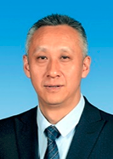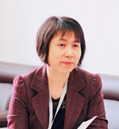2022(第18届)语言智能教学国际会议征稿通知(No. 4)
2022(第18届)语言智能教学国际会议
2022 International Conference on CALL
征稿通知(No. 4)
2022年10月15-16日 中国·西安
“2022(第18届)语言智能教学国际会议”将于2022年10月15-16日在西安举办。会议由中国英汉语比较研究会语言智能教学专业委员会(ChinaCALL)主办,北京外ckground-color:yellow;">ckground-color:yellow;">国语大学网络教育学院和人工智能与人类语言重点实验室、西安电子科技大学外ckground-color:yellow;">ckground-color:yellow;">国语学院和外语教育数字化研究院联合承办,《语言智能教学(英文)》国际期刊编辑部协办。会议内容包括会前工作坊、专家主旨发言、分会场发言以及学术圆桌论坛。大会将以深度互动、注重务实为特色,为探索新技术与外语教学的融合和发展提供相互交流、研讨、提高和合作的平台。
我们诚挚邀请国内外专家、学者、教师拨冗与会!
特邀发言人:
Phil Hubbard Phil Hubbard博士,美国斯坦福大学语言中心(Stanford University Language Center)荣誉退休高级讲师,2003-2020年期间担任海外学生英语课程项目部主任。过去四十年,在CALL的评价、发展、理论、研究方法、听力教学、教师教育和学习者培训等领域发表了丰硕的研究成果。曾参与制定《TESOL技术标准》(TESOL Technology Standards)(2008、2011)。目前担任国际期刊《计算机辅助语言学习》(Computer Assisted Language Learning)和《语言学习与技术》(Language Learning & Technology)副主编。最新专著An Invitation to CALL: Foundations of Computer-Assisted Language Learning可通过www.apacall.org免费下载。 【发言题目】 Emerging technologies and language learning: Mining the past to transform the future 【发言摘要】 The theme of this year’s ChinaCALL Conference, emerging technologies, will naturally be the focus of many exciting presentations. Artificial intelligence, machine learning, conversational robots, virtual worlds, virtual reality, augmented reality, automated assessment, and so on are full of promise and seem poised to revolutionize language teaching and learning over the next decade. Yet they have elements–mediational elements--that link them more closely to technologies of former days than might be expected. I first introduce some underlying concepts relating to the mediational properties of technology for language learning and teaching. I then discuss how language researchers, developers, and teachers can use what we have learckground-color:yellow;">ckground-color:yellow;">ned in CALL research and practice from the past to help them more effectively face the challenge of creating and refining effective language learning applications, activities, and tasks using these emerging technologies. I conclude with suggestions and examples from recent studies showing how this goal might be accomplished. |
王 泉 西安电子科技大学教授、博士、副校长。陕西省人机交互与可穿戴计算重点实验室主任。中国计算机学会理事、嵌入式系统专委会主任。教育部教学信息化与教学方法创新指导委员会副秘书长、软件工程教学指导委员会委员。中国高等教育学会创新创业教育分会副理事长。中国联合国教科文组织全国委员会专家。教育部《教育信息化长期发展规划(2021-3035)》和《教育部信息化“十四五规划”》编制专家组成员。 【发言题目】 信息技术赋能人才培养高质量发展(Information Technology Empowering the High Quality Development of Talent Cultivation) 【发言摘要】 本报告从人才培养的现状和高质量发展的需求出发,探讨大数据、人工智能等信息技术赋能课堂革命、教育教学评价改革等提高人才培养能力的一些思路,并介绍西安电子科技大学人才培养高质量发展的实践和效果。(The report starts with the current situation of talent cultivation and the demand of high-quality development. It presents some ideas of how to improve talent cultivation capability by using information technology (such as big data and artificial intelligence) to bring about classroom revolution and reform of teaching evaluation. The practice and results of high-quality talent cultivation of Xidian University are also covered in this report.) |
Thang Siew Ming Thang Siew Ming博士,马来西亚精英大学(HELP University)教授,马来西亚ckground-color:yellow;">ckground-color:yellow;">国立大学(Universiti Kebangsaan Malaysia)社会科学和人文科学学院名誉教授。研究领域包括计算机辅助外语教学(CALL)、学习者自主性,学习动机和眼动研究。现任PacCALL(环太平洋地区计算机辅助外语教学协会)主席和GLoCALL系列会议联合主席,担任多个知名CALL和语言教育期刊编委。学术成果丰硕,最新文章发表在《计算机辅助语言学习》(CALL)、《亚太教育研究者》(TAPER)、《语言与教育》(Language & Education)、《澳大利亚教育技术杂志》(AJET)等国际知名期刊。 【发言题目】 Eye-tracking research on young children: What can we learn from it? 【发言摘要】 There have been many studies on how children develop literacy skills, but not many of these studies attempt to investigate the cognitive pckground-color:yellow;">ckground-color:yellow;">rocess behind the development of these skills. Children who have not yet received formal instruction in reading are known as prereaders. Investigations into the cognitive pckground-color:yellow;">ckground-color:yellow;">rocesses of prereaders are difficult to carry out, as it is not possible to get them to express their thoughts in think-aloud protocol or participate in interviews. The presentation will share eye-tracking research which explore prereaders’ responses when exposed to reading materials under various cockground-color:yellow;">ckground-color:yellow;">nditions, such as looking at a picture and listening to a matching narration, looking at a picture and listening to a non-matching narration, given a picture without narration and also given a text with a matching narration only. Their story-telling performance was also investigated and match with their eye-tracking data. Studies undertaken in Western contexts will be compared with the studies undertaken in the Malaysian context to see the influence of culture as well as language proficiency on prereaders’ eye movements and story-telling performance. Theories will be used to derive a better understackground-color:yellow;">ckground-color:yellow;">nding of the cognitive pckground-color:yellow;">ckground-color:yellow;">rocesses that go on in their minds when exposed to the different cockground-color:yellow;">ckground-color:yellow;">nditions. |
李佐文 李佐文,教授,博士生导师,现任北京外ckground-color:yellow;">ckground-color:yellow;">国语大学人工智能与人类语言重点实验室主任。其他学术职务包括教育部外语教学指导委员会英语分委会委员,全国话语语言学研究会会长,中国广播电视联合会影视译制与传播委员会会长,中国高等教育学会外语研究分会常务理事等。在《外ckground-color:yellow;">ckground-color:yellow;">国语》、《中国外语》、《现代传播》、《外语研究》等刊物发表论文50余篇,出版专著教材10余部。研究领域包括话语语言学,计算语言学,语言教学等。 【发言题目】 Disciplinary Knowleckground-color:yellow;">ckground-color:yellow;">dge Graph and Intelligent Language Teaching 【发言摘要】 In recent years, artificial intelligence, big data, 5G, virtual reality and other technologies have penetrated into various fields of education, and have had a far-reaching impact on the traditional teaching content, mode and evaluation. The development trend of education from digitalization to intellectualization is increasingly obvious. Artificial intelligence has developed from computational intelligence and perceptual intelligence to cognitive intelligence, which is embodied in the fact that machines can understand data, understand language and then understand the real world, in the fact that machines can interpret data, explain pckground-color:yellow;">ckground-color:yellow;">rocesses and then explain phenomena, and in a series of human unique cognitive abilities such as reasoning and planning. As a semantic network, subject knowleckground-color:yellow;">ckground-color:yellow;">dge graph can not only enhance the interpretability and reasoning of artificial intelligence, but also provide technical means for domain knowleckground-color:yellow;">ckground-color:yellow;">dge modelling, the core and basic problem in personalized adaptive learning system. It is the key to build an intelligent education system. Therefore, the development of subject knowleckground-color:yellow;">ckground-color:yellow;">dge graph has become an important research topic for the development of intelligent education. |
Mirjam Hauck Mirjam Hauck博士,英国开放大学(The Open University, UK)语言与应用语言学学院“国际化、平等、多样性和包容性”项目副主任,英国高等教育研究院(UK’s Higher Education Academy)高级研究员。著有大量关于技术在语言和文化教学中的应用方面的文章和书籍章节,特别是在虚拟交流环境中。研究工作涉及学习者和教师的自主性、跨文化交际能力以及批判性数字素养等方面。定期在世界各地的学术会议、研讨会和工作坊上发言。现任欧洲计算机辅助语言学习协会(EUckground-color:yellow;">ckground-color:yellow;">ROCALL)主席,国际期刊CALL副主编,以及ReCALL和LLT编委。 【发言题目】 Critical CALL, Critical Virtual Exchange, and Critical Global Citizenship Education 【发言摘要】 Higher Education Institutions (HEIs) are responsible for preparing young people for the 21st ceckground-color:yellow;">ckground-color:yellow;">ntury labour market in a globally interconnected world by helping them develop their international and intercultural skills including foreign languages. One way of assuming this responsibility is through internationalisation at home (IaH) (Beelen & Jones, 2015) as only a minority of (language) students are, in fact, able to study abroad. Virtual exchange (VE) – also known as telecollaboration - is increasingly seen as “the” solution to IaH (O’Dowd and Beelen (2021). VE is a research-informed practice consisting of sustaickground-color:yellow;">ckground-color:yellow;">ned, technology-enabled, people-to-people education programmes in all subject areas in which constructive communication and interaction occurs between students who are geographically separated and/or from different cultural backgrounds, with the support of educators. It combines the deep impact of intercultural dialogue with the broad reach of digital technology (EVOLVE, 2019). Yet, it cannot be assumed that IaH and VE are inherently inclusive. On the contrary, they are as prone to suffer from Western hegemonies as any other form of online or blended education (Helm, 2020), the dominance of English being one example. Hence, my starting points are critical CALL and critical VE, each conceptualised as a vehicle for public engagement, and socio-political change. A vehicle which can address social justice and inclusion at institutional level, and for ickground-color:yellow;">ckground-color:yellow;">ndividuals for instance by improving students’ access to employment through purposeful (language) learning experiences which are
My stance is aligckground-color:yellow;">ckground-color:yellow;">ned with critical Global Citizen Education (GCE) as framed by Andreotti (2006) which has notions of power, voice, and difference at its core, and - similar to critical CALL and critical VE - involves the systematic development of critical engagement, refleckground-color:yellow;">ckground-color:yellow;">xivity, and re-learning. My contribution will be mix of theoretical framing and practical examples of language-focused instantiations of VEs that speak to a critical CALL, critical VE and critical GCE agenda. |
Jeong-Bae SON Jeong-Bae Son博士,在澳大利亚南昆士兰大学(University of Southern Queensland, Australia)教授应用语言学和TESOL课程并指导博士生。研究领域包括计算机辅助语言学习(CALL)和语言教师发展。在CALL领域发表了大量文章,并在世界各地举办研讨会和讲习班。现任亚太计算机辅助语言学习协会(APACALL)主席及APACALL系列丛书编辑。更多介绍请访问<https://drjbson.com>。 【发言题目】 Teacher Development through Exploration, Communication, Collaboration and Reflection 【发言摘要】 Language teachers need to develop their competence in computer-assisted language learning (CALL) and technology-enhanced language teaching (TELT). This talk explores language teacher development in technology integration based on Son’s (2018) Exploration-Communication-Collaboration-Reflection (ECCR) model. It also looks at technology standards and teacher development frameworks with a focus on Son’s digital language teacher development framework (DLTDF), which guides teachers what they can do and how they can engage with ECCR in digital environments where digital devices are used for learning and teaching. In addition, it discusses language teachers’ engagement with professional development with data from two studies, which investigated how in-service language teachers explore, communicate, collaborate and reflect for TELT. The results of the two studies ickground-color:yellow;">ckground-color:yellow;">ndicate that those teachers in the studies were engaged with various ECCR activities with different interests and competencies in their contexts. It is important to keep addressing the questions of how teachers can integrate technology effectively and how they can improve their knowleckground-color:yellow;">ckground-color:yellow;">dge and skills for TELT in continuously changing educational environments. |
赖春 赖春博士,香港大学教育学院副教授,CALICO Journal和CALL等期刊编委。研究领域聚焦技术与语言教育、考察教师和学习者如何使用技术促进语言教与学。赖春博士在这一领域进行了全面和系统的研究,已在国际期刊上发表相关主题论文80余篇,并有相关主题书籍章节出版。 【发言题目】 Positioning Language Teaching in the World of Emerging Technologies 【发言摘要】 Technology is pervasive and constantly updating. With more and more technologies getting entrenched and new technologies being introduced in language education, how we as language teachers should position language teaching in the world of emerging technologies? In this session, we will explore the promises some emerging technologies bring to language teaching and learning inside and outside the classroom. We will also discuss how language teachers can coordinate the learning opportunities inside and outside the classroom to reap the benefits emerging technologies bring to language education. |
大会主题:
新兴技术与语言教育
Emerging Technologies and Language Education
本届会议将重点关注新兴技术在语言教学中的应用及相关理论研究,尤其关注虚拟现实(Virtual Reality, VR)、增强现实(Augmented Reality, AR)、混合现实(Mixed Reality, MR)等技术在语言教学中发挥的作用及其产生的影响。我们邀请学界同仁分享其最新研究成果,发言可包括(但不限于)如下主题:
1. 计算机辅助外语教学的最新理论研究 (Exploring new theories in CALL)
2. VR、AR、MR在语言教学中的应用 (Using VR, AR, MR in language education)
3. 具身认知、体验式学习等VR理论研究 (VR Theories: embodied cognition, experiential learning)
4. 新兴教育技术与立德树人 (Emerging technology and well-being in education)
5. 技术和语言教育 (Technology and language education)
6. 计算机辅助外语教学的基础设施和环境构建 (CALL environment)
7. 计算机辅助外语教学与外语教师教育 (CALL & teacher education)
8. 基于网络的外语教学设计 (Web-based instructional design for foreign language instruction)
9. 基于网络的语言评估 (Web-based language assessment)
10. 学习者研究 (CALL learners)
11. 学习模态研究 (Modality of learning)
12. 基于网络和资源驱动的学习 (Web-based and resource-driven learning)
13. 基于互联网的跨文化交流 (Using the Internet for cultural exchange)
14. 基于语料库和数据驱动的学习 (Corpus-based and data-driven learning)
15. 基于移动信息技术的语言学习 (Mobile language learning)
16. 信息技术辅助自主学习模式的培养 (Fostering autonomous learning through technology)
17. 语言教育信息化发展与反思 (Lessons learnt in CALL)
18. 在线学习、协作学习和混合学习模式研究 (E-learning, collaborative learning and blended learning)
19. 大规模在线开放课程 (Language MOOCs)
20. 多媒体/超媒体环境管理 (Managing multimedia/hypermedia environments)
21. 职业教育信息化发展研究 (CALL in vocational education)
22. 人工智能在教育领域的应用 (Using Artificial Intelligence in education)
高质量的英语论文将择优推荐在Journal of China Computer-Assisted Language Learning (JCCALL)(《语言智能教学(英文)》)国际期刊上发表。该期刊依托中国英汉语比较研究会语言智能教学专业委员会(ChinaCALL),由北京外ckground-color:yellow;">ckground-color:yellow;">国语大学于2021年9月创刊,为ChinaCALL会刊。该刊遵循国际同行评审惯例,读者可以通过期刊网址(https://www.degruyter.com/journal/key/jccall/html)免费获取所有论文。
优秀论文还将择优推荐到其他国际知名期刊,包括International Journal of Computer-Assisted Language Learning and Teaching(IJCALLT)(《国际计算机辅助语言学习和教学期刊》)和Chinese Journal of Applied Linguistics(《中国应用语言学(英文)》)。此外,大会还计划将高质量的论文在线结集出版。
重要日期(暂定):
2022年3月1日起 | 接收论文摘要 |
2022年8月15日 | 摘要提交截止 |
2022年7月31日起 | 发送邀请函 |
2022年8月15日 | 听会注册截止 |
2022年9月15日 | 发布大会日程 |
2022年10月14日 | 报到接待 |
2022年10月15-16日 | 会议召开 |
会议信息:
1. 报名须知:请通过会议官网“注册&投稿”进行参会注册及摘要提交。
2. 工作语言:英文(优先)、中文
3. 会议形式:包括专家主旨发言(每人50分钟,含互动)和论文宣读(每篇20分钟,含互动)。
4. 会议费用:会议费800元(全日制研究生凭证400元),缴费方式待通知。会议费含资料费等管理费用,一经收取,恕不退还。
5. 差旅食宿:差旅和食宿费用需自理,请关注官网信息自行预定附近酒店。
6. 发票信息:线上注册时填写发票信息。
摘要提交说明:
1. 截止日期:摘要提交截止日期为2022年8月15日。每位作者至多提交两篇。
2. 摘要要求:不超过300词(不计题目、作者、单位和参考文献词数),包括研究背景、研究目的、研究方法和研究结论等信息(基金项目支持请备注)。
3.摘要录用后请提交小论文(3000字左右,中英文均可)至conference@beiwaionline.com。
联系我们:
邮箱:conference@beiwaionline.com
电话:010-88818307 王老师/胡老师
会议官网:http://www.chinacall.org.cn/conference2022/
关注“北外网院”微信公众号,追踪会议最新动态!

大会组委会
2022年7月
















